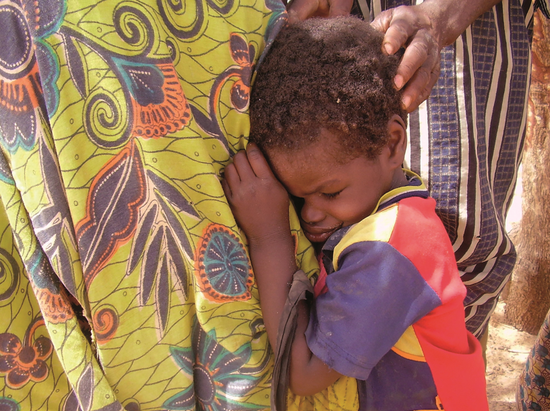
Noma (cancrum oris) is a serious gangrenous disease of the mouth and face, mainly affecting children aged 2 to 6 years in sub-Saharan Africa.
Despite substantial knowledge gaps, it is reported to be linked with malnutrition, poor oral hygiene, immunosuppression, and living in extreme poverty situations.
This course addresses epidemiology, pathogenesis, clinical features, diagnosis, treatment, and public health considerations, including the human rights perspective of noma.
Photo credits: Hilfsaktion Noma e.V: https://www.afro.who.int/publications/information-brochure-early-detection-and-management-noma
Langue: English
Noma
Informations sur le cours
This course is also available in:
Français - Português - Hausa - हिन्दी, हिंदी
Overview: Noma is a rapidly progressing, invasive, and debilitating gangrenous disease of the orofacial region, which affects the most vulnerable and marginalized populations worldwide, in mainly sub-Saharan Africa, and also, in some cases, in Asia and Latin America. Accurate estimation of the noma burden is challenging due to its fast progression, with high mortality at an estimated 70–90% without any treatment, weak health systems and disease surveillance, and lack of awareness of the disease by health care workers and the general population. Despite substantial knowledge gaps, noma is reported to be linked to malnutrition, poor oral hygiene, immunosuppression, and extreme poverty situations, many of which are targeted by the United Nations Sustainable Development Goals (UN SDGs) in the 2030 Agenda for Sustainable Development. While commonly available broad-spectrum antibiotics can be used to treat the early reversible stages of noma, once it progresses, the mortality rate is high and the sequelae are numerous, including difficulty in eating, drinking, and speaking, disfigurement, and social stigma.
The aim of the course is to provide information about noma, and to increase the knowledge and skills of national and front-line health workers to help them prevent, identify and treat this disease.
Course duration: Approximately one hour.
Certificates: A Record of achievement certificate will be available to participants who score at least 80% in the final assessment. Participants who receive a Record of achievement can also download an Open badge for this course. Click here to learn how.
Ce que vous apprendrez
- describe the epidemiology and pathogenesis of noma
- describe the clinical aspects
- explain how the diagnosis is made
- explain how to treat noma
- summarize the socioeconomic impact, including the human rights perspective, and the appropriate public health interventions.
Contenu du cours
Module 1: Introduction:
By the end of this module, you will be able to understand noma and the linkage between noma and Neglected Tropical Diseases (NTDs).Module 2: Epidemiology and pathogenesis:
By the end of this module, you will be able to describe the disease burden and the geographical distribution of noma; understand the age distribution; the associated risk factors of noma; and the pathogenesis of noma.Module 3: Clinical features and diagnosis:
By the end of this module, you will be able to make a clinical diagnosis of noma in its different stages; list the conditions to be ruled out in the different diagnosis; and describe the potential complication and sequelae of noma.Module 4: Treatment:
By the end of this module, you will be able to understand the available treatment and intervention options for each stage; understand the sequela care and rehabilitation of noma survivors.Module 5: Public health and human rights considerations:
By the end of this module, you will be able to explain the socioeconomic including human rights issues and psychological impact of noma; and explain the public health interventions to prevent and control the disease.
Inscrivez-moi à ce cours
Certificate Requirements
- Obtenez un certificat de réussite en gagnant plus de 80% du nombre maximal de points pour la somme de toutes les tâches hebdomadaires.
- Obtenez un Open Badge en complétant le cours.